Food security is always a top priority and is especially critical when a crisis strikes. Yet a lot of families question the value of stocking up on foods that might just sit idly in a basement or take up space in a pantry.
While most pantry staples have a shelf life of a few years, some lesser-known items can remain edible for 100 years or more if stored properly. These ultra-long-lasting foods aren’t just survivalist novelties. They’re nutritious, calorically dense, and versatile enough to be pulled out and used when needed or rotated through your everyday stocks. A short version of the post in this video:
1. Hardtack
Also known as pilot bread, this dense, dry cracker is made from just flour, water, and salt. When stored in an airtight container or vacuum-sealed bag, it can last indefinitely. It was used by sailors and soldiers as an ultimate survival bread.
You could even use it today as a replacement for any type of crackers. I’ll even take it with me hunting to make small meat and jerky sandwiches.
2. Honey
Naturally antimicrobial and low in moisture, honey never spoils. Archaeologists have found edible honey in ancient Egyptian tombs. My late uncle was a beekeeper and always had honey with him. He used it in everything from sweetening his medicinal teas to extending the shelf-life of his home-baked goods.
3. Pemmican
A high-calorie Native American survival food made from dried meat, fat, and sometimes berries. Properly stored, it can last 50 to 100 years. It’s a great replacement for jerky and is more nutrient-dense.
Speaking of survival foods, back in the Cold War era, the U.S. military came up with a top-secret survival food — a so-called “Doomsday Ration” — specifically designed to keep the entire American population fed during a major catastrophe.
This wasn’t some gourmet dish… it was built to be dirt-cheap, long-lasting, and loaded with enough calories to keep an adult alive and moving for just $0.37 a day. You can discover the exact recipe right here.
4. Maple Sugar
Unlike syrup, maple sugar is crystallized, which makes it shelf-stable for a century. It’s an excellent natural sweetener with high energy content. You can use it to replace normal brown or refined white sugar in your pantry.
5. Uncooked White Rice (Vacuum-Sealed)
Stored in oxygen-free containers, white rice can last over 100 years. It’s a versatile base for many meals and serves as a belly filler when paired with protein and vegetables. If you’re going to seal it in plastic bags of vacuum containers, be sure to keep it in a cool, dark place away from freezing temperatures.
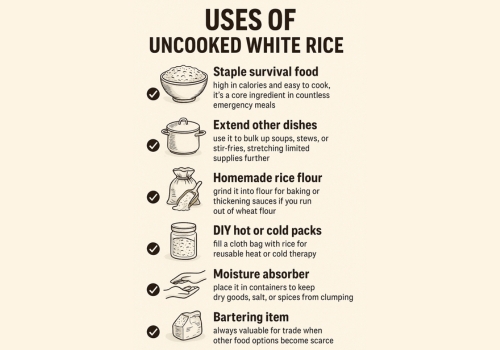
6. Dehydrated Beets
Rich in iron and antioxidants, properly dehydrated, and can last a century. Just give it ample time in the dehydrator and then keep it in vacuum-sealed containers and store in a cool, dark place. You can then rehydrate them as needed or chop the dehydrated beets into small pieces as a snack.
7. Whole Dried Corn Kernels
Used for grinding into cornmeal or making hominy, dried corn is incredibly shelf-stable and nutritious. The trick here is to use dent corn and don’t nixtamalize it. The corn needs to be in a completely unprocessed form.
Then vacuum seal it and store some calcium hydroxide near it, but not with it. That way, you’ll have what you need to nixtamalize it when you do want to use it.
8. Soy Sauce (Fermented)
The salt and fermentation process used to make real soy sauce gives it an extremely long shelf life of up to a century in dark, cool storage. It’s a great seasoning agent, and the fermentation process even gives it trace probiotic properties.
NOTE: This only applies to traditional fermented soy sauce, not the commercially produced stuff.
9. Ghee (Clarified Butter in Tins)
Unlike butter, ghee doesn’t spoil when wrapped tightly in aluminum foil and stored in an airtight container. Ancient Indian texts mention ghee lasting decades, if not centuries. You can then pull it out any time you want a cooking oil with a high smoke point.
10. Sprouting Seeds (e.g., Alfalfa, Mung Bean)
When stored in Mylar bags with oxygen absorbers, these seeds can remain viable for decades. You can then plant them in a neutral soil medium to grow fresh greens on demand.
11. Lentils (Dry)
Dried lentils last virtually forever when kept airtight. They’re high in protein and fiber and cook quickly. They’re a great way to keep protein in your diet even when meat is scarce.
12. Powdered Cocoa (Non-Fat, Unsweetened)
Stored in a cool and dry place in vacuum-sealed bags, pure cocoa powder lasts 80 to 100 years. I find it helps to store it in small vacuum-sealed bags that I can pull out when I want to add some chocolate flavor to things. It’s easy to mix in a little sugar, maple sugar, or powdered milk to enhance the cocoa powder.
13. Instant Coffee (Freeze-Dried)
Packed properly, freeze-dried coffee can last indefinitely and boost morale during long-term emergencies. Admittedly, it’s not as good as real coffee, but it can provide you with a little caffeine kick when you want it.
14. Dehydrated Onions
 Lightweight, flavorful, and loaded with sulfur compounds that support immune health, dehydrated onions outlast canned vegetables by decades. It’s the sulfur compounds that also boost their shelf life. Just bear in mind that once dehydrated, the onions will never sprout again.
Lightweight, flavorful, and loaded with sulfur compounds that support immune health, dehydrated onions outlast canned vegetables by decades. It’s the sulfur compounds that also boost their shelf life. Just bear in mind that once dehydrated, the onions will never sprout again.
15. Potato Flakes
When vacuum-sealed potato flakes are a comfort food with surprising staying power. They rehydrate easily and offer bulk calories. They’re also surprisingly versatile; you can add them to everything from soup to baked goods.
16. Bouillon Cubes
High in salt and dried for preservation, bouillon cubes offer a lot of added flavor. They’re a great way to make bland things like rice, beans, and potatoes more palatable.
17. Dried Seaweed (Nori, Wakame)
Packed with iodine and minerals, dried seaweed lasts nearly forever when kept dry and vacuum-sealed. It’s a great product for wrapping other loose foods to create your own nori rolls.
18. Raw Honeycomb
Raw honeycomb that’s unprocessed and stored in beeswax can last indefinitely. The wax helps preserve its integrity for generations. My beekeeper uncle used to render the wax from the honey when he wanted it, and then used the wax to create his own candles. It was also a great way to light his off-grid hunting shack.
19. Whole Spices (Cloves, Cinnamon Sticks)
Whole spices last far longer than ground versions and retain both flavor and medicinal properties. They’re a great way to add a little flavor to otherwise bland meals.
20. Molasses Powder
Dehydrated molasses provides minerals and calories, with much better shelf stability than liquid molasses. You can add it to a host of things, including baked goods to add flavor and sweetness.
21. Hard Cheese in Wax
When aged and sealed in wax, hard cheeses like cheddar and parmesan can last decades without refrigeration. This is how they’re kept in alpine caves for years.
22. Chia Seeds
High in omega-3s, protein, and fiber, chia seeds have an exceptionally long shelf life. When kept dry and sealed, they can remain viable for decades.
23. Coconut Sugar
Lower glycemic than table sugar, and incredibly shelf-stable, coconut sugar can last for years. It also brings trace nutrients that can help augment your diet when mixed with bland belly-filling foods like rice.
24. Dehydrated Cabbage
Lightweight, easy to store, and high in vitamin K. Excellent for soups and stews. My uncle used to add it to his bean soup early on in the cooking process to let it absorb the surrounding water and add bulk.
25. Dry Pasta (Durum Wheat or Eggless)
Properly stored pasta can last 30–100 years and is incredibly calorie-dense. The trick here is to vacuum seal it and keep it in a cool, dark place.
NOTE: Pasta that includes eggs will not last as long. It must be eggless pasta.
26. Salt (Non-Iodized, Pure Rock or Sea Salt)
Salt never spoils. While we think of it today as a seasoning, it’s also essential for food preservation and helps with electrolyte balance. If you’re going to keep animals as part of your survival strategy, they, too, will need an excessive amount of salt. A salt block can also be used to attract deer to your property.
27. Wheat Berries
Whole kernels of wheat can be ground into flour and stored for over a century in sealed containers. It’s important to make sure the moisture content is as low as possible. Then store them in a vacuum-sealed container in a dark place that is cold, but never actually freezes.
28. Powdered Eggs (Freeze-Dried)
While they’re not very popular with people who’ve eaten a lot of them, military soldiers, outdoorsmen, and avid backpackers have been eating them for nearly a century. They rehydrate easily into scrambled eggs, and you can even use them for baking. They’re also an easy way to add protein to a lot of other meals like rice and beans.
29. Canned Cheese (Processed, Shelf-Stable)
While it isn’t gourmet, and might be shunned by some, canned cheese is tough enough to survive a nuclear winter. Beyond its obvious caloric value, it also has a fair amount of sodium, which is sometimes in short supply in disaster scenarios. You can also crack that can open at any time and use it as the base for creative queso dips!
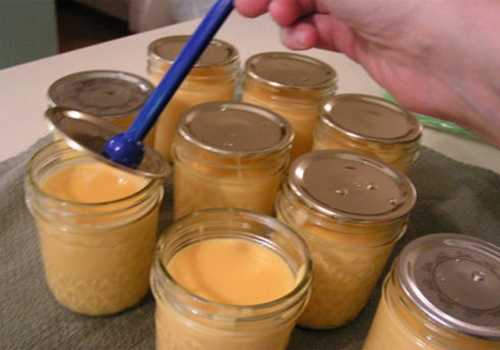
30. Freeze-Dried Meats (Beef, Chicken, Pork)
When commercially prepared and vacuum sealed, freeze-dried meat can last 25 to possibly 100 years. They offer vital protein and can be used in soups and dishes like beans and rice.
NOTE: This is not the same as jerky, and you shouldn’t try to treat it as a jerky replacement.
31. Canned Bacon (Layered in Lard)
When sealed in airtight tins, canned bacon can last decades while offering real flavor and fat. I admit there was a time when I didn’t know canned bacon existed, but it literally saved my breakfast when my buddy pulled out a can on a wilderness retreat.
If you love old-school fat sources, you should learn how to make lard and tallow just like the Amish — it’s a forgotten skill every prepper should master.
32. Barley with Hull Attached
Barley is a high-fiber grain that stores exceptionally well long-term and can be ground, boiled, or used in soups. My grandmother used it to add belly-filling body to broth and tomato soup.
33. Black Tea Leaves (Vacuum-Sealed)
Loaded with antioxidants and caffeine, tea lasts indefinitely when stored dry and dark. Pu’erh tea, in particular, is easy to store in blocks and has tons of antioxidants while also improving digestion and heart health.
34. Coconut Oil
Coconut oil has a long shelf life and multiple uses. You can cook with it, use it in a first aid kit and even as a skin lotion. To maximize its shelf life, you want virgin coconut oil that’s stored in an opaque glass container in a cool, dark place.
35. Dried Mushrooms (Porcini, Shiitake)
When properly dried, mushrooms like porcini and shiitake offer earthy, umami-rich flavors and are surprisingly nutritious. Properly dehydrated, vacuum-sealed sealed and stored in a cool, dark place, mushrooms resist spoilage for decades.
So How Can You Stockpile These Foods?
Building a survival food stockpile today is so affordable and simple, even if you include the long-lasting food from this list, it’s shocking how many still ignore it. When disaster hits, grocery stores will be stripped in hours—and your fridge won’t save you when the power goes out. Inside A Navy SEAL’s Bug-In Guide, you’ll discover:
➡️ A complete food system that covers all meals—breakfast, lunch, and dinner—for 3, 6, and even 12 months.
➡️ Shelf-stable foods that require no refrigeration—perfect for grid-down scenarios.
➡️ Exact places to buy survival food cheap, without breaking the bank.
➡️ A done-for-you rationing plan, giving you 2,200+ calories a day plus essential nutrients to keep you strong and alert.
➡️ The secret to turning a small pantry into a life-saving bunker.
➡️ Other indispensable survival items, except from food.
This isn’t theory. It’s a real, battle-tested blueprint to survive any crisis.
Final Note on Foods That Can Last a Century
Stockpiling these foods is about more than just prepping for disasters. It’s about building long-term food resilience for you and your family. Many of them can be pulled out of storage and rotated with your stocks to make everyday meals.
With vacuum bags, Mylar bags, oxygen absorbers, and kept in cool, dark conditions, you can create a pantry that outlives most products on store shelves. Your grandchildren might even open them long after you are gone!
Even with a century’s worth of food, you won’t last long without water. If you’re worried about what’s really coming out of your tap – and these days, who wouldn’t be – there’s a powerful, no-nonsense solution you need to hear about. It’s a backpack-sized water generator that literally pulls fresh, pure water straight out of the air around you. This isn’t science fiction or some far-off dream; it’s real, reliable, and ready to use right now.
You may also like:
Food Prepping Skills I Learned in the Military
DIY Cheap Root Cellar Ideal for Your Food Stockpile (Video)
The Biggest Enemies of Long-Term Food Storage (It’s Not Looters)

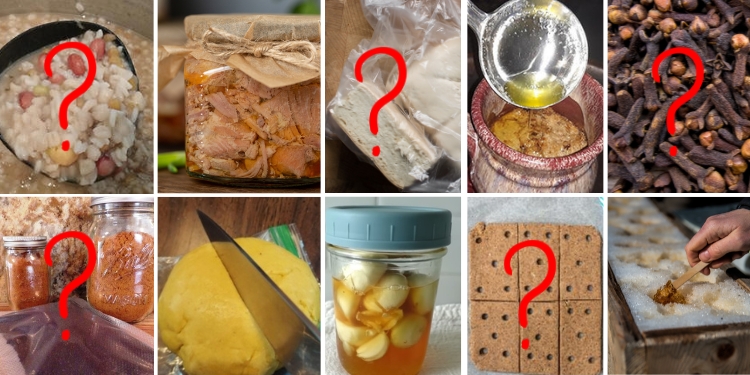
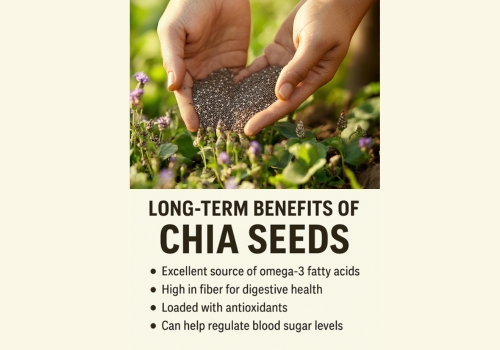
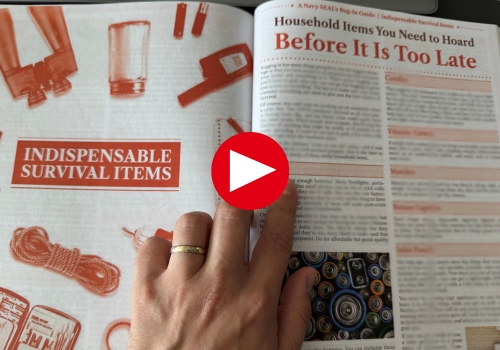








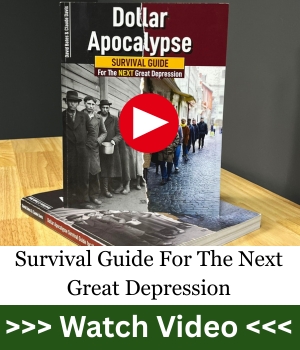












That’s a good list. Lentils are underrated, not only are they dirt cheap, they are fast and easy to cook because they have less protein than other legumes but still pack a lot of calories from carbs.
Hard corn is great for long term storage, but Calcium Hydroxide has a short shelf life. No problem because Potassium Hydroxide, lye, is so easy to make (especially compared to burning limestone to make lime) and is one of the traditional ways to nixtamalize corn, which makes the nutrients in corn available. The 1st time I made lye I had grilled a bunch of chicken over hardwood, then it started raining and I left the grill out for two days. When I finally started cleaning it out the slurry of wood ash, fat, and water had made a lye solution strong enough to burn my hands. Lots of videos on making lye and lye water, vital info if the TEOTWAWKI comes around (and you survive it).
Solid insights! Lentils are a prepper’s secret weapon, indeed. Quick to cook, nutrient-packed, and shelf-stable for years. That wood ash lye trick is pure gold! Nixtamalization can turn gritty feed corn into a lifeline when the grid’s down. Your chicken grill story drives it home too.
Thanks for commenting!
I love this article….personal experience i had alot of skin issues in my past…like red patchy areas…scaly….i bought some coconut oil and started rubbing it into my skin and my skin issues went away….also started cooking with it..spinkle shreded coconut on your eggs then fry with coconut oil … smells great and tastes great .I throw alot of coconut in my friut dishes’.Very affordable to.I hope all you Texas Preppers are ok…Mother nature sucks….i feel for you….
Appreciate you dropping that knowledge! Coconut oil is a prepper’s Swiss Army knife: cooking, skin care, even patching up small wounds in a pinch.
Frying eggs with shredded coconut? That’s next-level ingenuity for keeping spirits high when the world’s falling apart.
Howdy from high in the desert swamp,
I learned something about rendering tallow. The last batch I made in 2023 had two quarts go bad. I didn’t ladle it into a big bowl and let sit for water to go to the bottom. I discovered a new personnel dispersion agent. Yukadoo. Anyway.. pemmican is rather easy to make and if completely dry meat and blueberries are used and the tallow is water free it lasts decades. Live and learn. At least I learned now and not in a bad situation.
Remember the Alamo
Remember 9/11
Remember North Carolina
Remember to have your soul prepared
Spot on! Screw up now with a safety net, not when it’s do-or-die. Pemmican’s the ultimate survival fuel, but tallow prep is where the rubber meets the road. One drop of water left in there, and your decade-long stash is a moldy mess. Channel that Alamo grit and keep honing those skills!
Question, not comment.
What about a home dehydrator to go with my chamber Vac packer?
If I make up a batch of xyz, dehydrate it WELL, Vac pack it, just how long will those foods keep ? ? ? In 1980 I was eating dehydrated, Vac packed ground beef patties, And, they were good. bought them at a surplus store in Rochester NY, about 10 cents each ! I Wish I bought a few THOUSAND MORE. Made for uncle Sam, possibly for his trip to Korea.
Great question! Dehydrate to bone-dry, vac-seal with a quality barrier bag, and toss in an oxygen absorber. You’re looking at 5–10 years, maybe more, for most foods. Low-fat stuff lasts longest; high-fat cuts shelf life.
Those 40-year-old surplus patties you ate? That’s military-grade wizardry, but a solid dehydrator and vac-packer can get you close.
Great read, gotta try that canned cheese, looks delicious
Thanks for the shout! Canned cheese awesome: calorie-dense, morale-boosting, and versatile when fresh dairy’s a distant memory. Test a few brands now to find your go-to before you stack ‘em high. Nothing beats a creamy spread when the world’s gone dark.
Staff, thanks for reply, burgers -they were foil packed, dark brown ( like stopping light brown) Silver on inside. I was young, they were delicious and gone. I paid like 10 cents per single pack. would like a thousand more
PS I Vac pack rice, for everyday use. buy 50 lbs at a time, save and just in case. One thing I learned, double bag it ! the sharp little ends WILL cut the bags over time
everyone, keep up the good work !